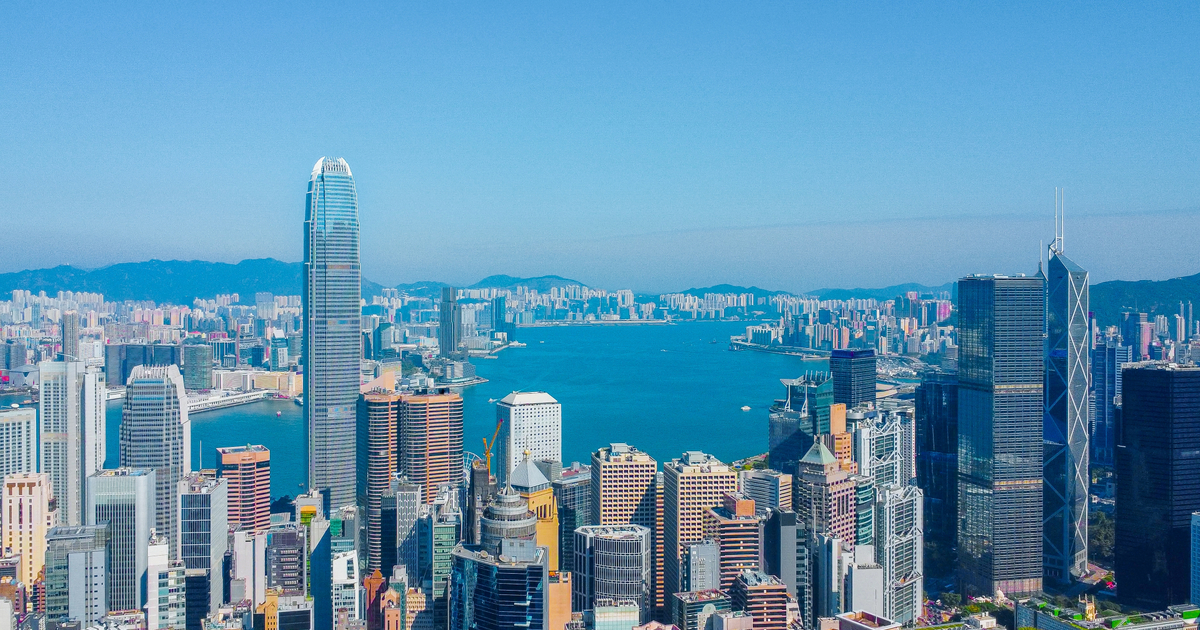Want to restore a forest? Give it back to Indigenous peoples who call it home
Doris Ríos is a Cabécar leader who has fought to reclaim Indigenous territory in Costa Rica. | Collage by Israel Vargas | Photos by Justine CalmaThese women took back their land in Costa Rica, and now they plan to reforest...
/cdn.vox-cdn.com/uploads/chorus_asset/file/25249710/246961_Costa_Rica_Renewables_1_IVargas.jpg)
Doris Ríos ducks gracefully under barbed wire fencing, wearing knee-high black rubber boots, a black dress, and the black horn of a beetle dangling from a beaded necklace. Until recently, this barrier would have kept her out of a ranch operating on Indigenous Cabécar territory. Now, the fencing protects rows of young guava trees that she and other Indigenous women planted on land they took back from the company that once illegitimately occupied it.
The land is healing. Ríos’ dark eyes are piercing as she stops to survey the terrain, her jet-black hair falling gently in layers from chin to collarbone. She looks out over a green hillside where young saplings are just starting to peek above tall grass. The trail on the other side of the barbed wire is orange dirt; it kicks up into dust when dry and cakes into muddy clay when wet.
She wants to bring back the forest that was here before it was razed to make room for cattle. Ríos is Cabécar, one of the Indigenous peoples in Costa Rica fighting to reclaim land taken by ranchers who cleared forests to feed the world’s skyrocketing hunger for beef.
“We want the land to be as rich as possible, grow and recover from everything they have done.”
These days, Costa Rica might be better known for its ecotourism — a sign of its success as the first tropical country to reverse deforestation. It’s become a beacon of hope for forest restoration on the international stage, a model for other governments to follow now that more than 190 countries have agreed to conserve 30 percent of the world’s lands and restore 30 percent of degraded ecosystems under the 2022 Kunming-Montreal Global Biodiversity Framework.
But like other countries, Costa Rica has to catch up on something that’s crucial for protecting forests and communities that rely on them: upholding Indigenous peoples’ rights to their land. Ríos and other Indigenous leaders around the world are working to change that. Sometimes, that means fighting for policy change or battling in court. It also means taking back what’s theirs, one plot of land at a time, and letting something both new and old grow there.
“We want the land to be as rich as possible, grow and recover from everything they have done,” Ríos says, speaking to The Verge through an interpreter.
A growing body of research shows that forests are often healthier in Indigenous hands. In the Amazon, areas where Indigenous groups have secure land tenureship have shown lower rates of deforestation and higher rates of regrowth where forests have been razed.
“A lot of the Indigenous movement in Brazil is intricately related to the environment. There’s strong preferences for preserving forest habitats because a lot of the local cultures and traditions rely on these forested areas,” says Kathryn Baragwanath, a Harvard Academy scholar who has published research on forest regrowth in Indigenous territories in Brazil.
She’s quick to point out, however, that Indigenous territories shouldn’t be exploited in the name of conservation either. “These are first and foremost human rights policies,” Baragwanath tells The Verge. “But I think that the added benefits of these types of policies for environmental outcomes is quite clear and quite significant.”
Doris Ríos crosses fencing into a plot of land where she and her family staged a sit-in to to reclaim Indigenous territory.
After all, efforts to create protected areas like national parks have also displaced Indigenous peoples. A different strategy that’s shown success is to ask local communities to lead the way in preserving forests. In Nepal, forest cover nearly doubled between 1992 and 2016, thanks in large part to a plan to put local groups in charge of managing land within previously nationalized forests. It strengthened mutually beneficial relationships between forests and communities. People took care of the forest because they also relied on it for food or other resources like medicines and firewood. And they were more likely to use those resources sustainably when they were also responsible for conserving them.
Just a few decades ago, Costa Rica had one of the world’s highest rates of deforestation. A policy called “denuncio” in the 1930s and ’40s allowed colonists to claim as much as 50 hectares of land as their own if they cleared forest for agriculture. Powerful landowners scooped up vast swathes of terrain; just 1 percent of property owners controlled 25 percent of agricultural land by the 1990s. Forest cover shrank from 75 to 29 percent of the country between 1940 and 1990. Pastures replaced much of it, with the country selling more than half of its beef to Burger King.
Then Costa Rica did an about-face. In 1996, the national legislature passed a transformative forest law that made deforestation illegal in most cases. It also set up a program called “Payments for Environmental Services” (Pago de Servicios Ambientales) that pays people to protect forests and other natural resources on their land. The payment reflects the value in protecting biodiversity and water resources, mitigating greenhouse gas emissions (since trees and soil trap planet-heating carbon dioxide), and even safeguarding “natural beauty” for tourism. A tax on fossil fuels pays for much of the program.
Indigenous people in Costa Rica, whose territories cover about 7 percent of the country, receive around 12 percent of the program’s resources, according to the National Forestry Financing Fund that administers it. Ríos says her community has yet to participate in the program in China Kichá; they’re still working to restore the land.
Switch to clean energy. Stop deforestation. Restore ecosystems. They’re lofty goals that more and more corporations and governments are setting for themselves. If it seems too ambitious, just look to Costa Rica. It’s the first tropical country to have reversed deforestation, and it generates nearly 100 percent of its electricity from renewable sources of energy.
There’s a lot to learn from those successes and even more to gain from challenges the country now has to tackle. Seasons are increasingly unpredictable. Could climate change upend past victories? Meanwhile, Indigenous leaders face violence from people trying to stop their campaigns to reclaim and reforest Indigenous territories. Can the country undo a history of land-grabbing?
The Verge explored those questions on the ground in Costa Rica, with support from the International Center for Journalists and local media organization Punto y Aparte, and found hard-learned lessons that cross borders.
For decades, big agriculture’s growing footprint had pushed Indigenous families from their homes. The government of Costa Rica recognizes 24 Indigenous territories belonging to eight Indigenous peoples, including the Cabécar. But it hasn’t fully enforced a law passed in 1977 that bars non-Indigenous people from owning land in legally recognized Indigenous territories, a problem that United Nations watchdogs on human rights and the rights of indigenous peoples have called out in recent years. Indigenous leaders’ peaceful protests have been met with “significant violent backlash from non-indigenous illegal land occupants,” a UN special rapporteur declared in 2020.
“There are so many sad stories about how [non-Indigenous people] took our lands with lies and violence; others stayed, and others went,” Ríos says. She remembers stories her grandparents used to tell about women who left after facing harassment by non-Indigenous men and of a storekeeper who claimed he could take Cabécar land because the resident owed him money.
“We didn’t know about the laws that were protecting us. So we just prefer to give them the land instead of fighting them,” says Ríos, who was born in China Kichá but spent much of her childhood in the province of Limón, where she says many people from her community moved.
Costa Rica is one of the Central American countries forming the land bridge that connects North America to South America, straddling the Pacific Ocean to the west and the Caribbean Sea to the east. China Kichá is a roughly a four-hour drive south of the country’s capital along roads that wind high enough through mountains to make passengers’ ears pop — past what locals have called Cerro de la Muerte or “Hill of Death” since sojourners had to take the perilous journey by foot or horseback. Getting to Limón takes another several hours by car, crossing the country from its west coast to the Caribbean shoreline.
The government of Costa Rica recognized China Kichá as Cabécar territory back in 1956. But it annulled that decision in 1982, claiming that too many of its Indigenous residents had migrated away from the area. Regardless, Cabécar activists fought to keep rights to the land. In 2001, Costa Rica decided to recognize China Kichá as Indigenous territory again — but only around a quarter of the area it previously did.
A view from a hill in China Kichá shows patches of forest and land cleared for agriculture.
That hasn’t stopped activists like Ríos from taking back more land. In 2018, they started doing sit-ins to reclaim more of it. The largest action took place in 2019, when they took back around 350 hectares holding some 400 cattle, according to Ríos. She remembers preparing for their sit-in at 3AM in the morning, cooking for the 15 or so people, including her siblings, and unsure how much food they would need. They had no idea how long they would need to occupy the land until it was theirs again.
They stayed for two years. During that time, she says they faced violent attacks from non-Indigenous counter-protesters who hurled racist slurs and burned down neighboring Cabécar homes. The beetle horn she wears as a pendant came from the ruins of one of those blazes, another victim of the conflict, she says.
She and her family faced death threats, and in 2022, her teenage son was knifed behind his ear in what the family believes was a racially motivated attack. Her voice starts to tremble when she speaks about her son; she remembers running barefoot to find him as soon as she heard the news. She says she still doesn’t feel safe when venturing outside of her community. And even now, on the land she’s reclaimed, she pauses with each car or truck that passes by — tensing up when she doesn’t recognize the driver.
Other prominent Indigenous activists have been killed. A two-hour drive southeast of China Kichá, Brörán leader Jehry Rivera was shot and killed while trying to reclaim Térraba territory in 2020. The year before, Bribri leader Sergio Rojas Ortiz was found dead in his home after being shot 15 times. Rojas had spent decades fighting the illegal occupation of Indigenous lands. UN human rights experts condemned the murder, saying, “Indigenous families trying to recover their land faced imminent danger.”
For Ríos, it was all the more reason to persevere. After Rojas was killed, she says, “we knew we had two choices: either disappear as a Cabécar Indigenous group or take these actions to take back our land.”
While physically occupying the land in China Kichá, the Cabécar activists also battled in court. A judge ultimately decided in 2023 that non-Indigenous ranch owners had wrongfully acquired land within China Kichá Indigenous territory. The land belongs to the Cabécar.
It was a David and Goliath success story against influential property owners. Ríos says that includes the owner of a major private university in San José, the capital of Costa Rica. Legal documents show that a ranch owner shares the same name as the owner of one university, although The Verge was unable to verify with the school whether they were the same person. Last year, Ríos received the International Women of Courage award from the US Department of State.
The land-back movement spreads far beyond China Kichá. Indigenous peoples have reclaimed some 12,140 hectares — an area larger than Walt Disney World — across five different territories in Costa Rica, Yale Environment 360 reports. But a lot of their traditional lands are still not in their control. Cabécar people in China Kichá have now been able to reclaim the 1,100 hectares that the federal government formally reinstated as Indigenous territory in 2001, but that’s still only about a quarter of what was theirs decades before. Around the world, Indigenous people accounted for more than a third of land and environmental defenders killed in 2022 despite making up just 5 percent of the global population.
Ríos sees a future for China Kichá where the forest regrows and people thrive, a home for her family and a place where they can sustainably grow their own food. Those aims don’t have to be at odds with each other — as the success of programs that prioritize community well-being alongside conservation shows.
“We see nature and the environment as part of us and within us,” she says. “When we see a tree is falling down, that means also we are falling down.”
Sisters Doris and Petronila Ríos.
Ríos and others in her community have planted some native guava saplings on the former pasturelands that they once sat in to reclaim. But they won’t actually need to plant too many trees to bring the forest back. Forests have a remarkable ability to recover on their own when allowed to regrow naturally. Fruit trees are a clever choice to help speed up that process, however. They attract animals that eat the fruit, who then spit out seeds — from the guava or whatever else they’ve come across — or spread them in their droppings.
It’s the kind of insight that Indigenous advocates and scientists have wielded to push back against less effective corporate-sponsored tree-planting campaigns that have become increasingly popular around the world. Without local knowledge or community buy-in, these projects often fail. Sometimes, the best way to support a forest is to leave it in the hands of someone who’ll steward it as part of their own home. And yet, Ríos says her community still faces stigma for following that wisdom.
“People are attacking us; they say that we are just lazy people because we take the land back and we don’t do anything. But that’s the idea,” she says. “We are just giving time to the land to recover.”
The Cabécar community in China Kichá — now some 200 people strong — is recovering, too. After visiting the guava trees, Ríos stops to greet a woman cooking over a makeshift stove under an open shelter made of a thatched grass roof and wooden posts that still resemble tree trunks. It’s her sister, Petronila, stirring a pot of chicken and rice on another parcel of land they recovered together through sit-ins. Behind her are several rows of young beanstalks that are already feeding the community.
Photography by Justine Calma / The Verge
The International Center for Journalists supported this reporting, and Punto y Aparte contributed to the report.

 Tekef
Tekef 
































